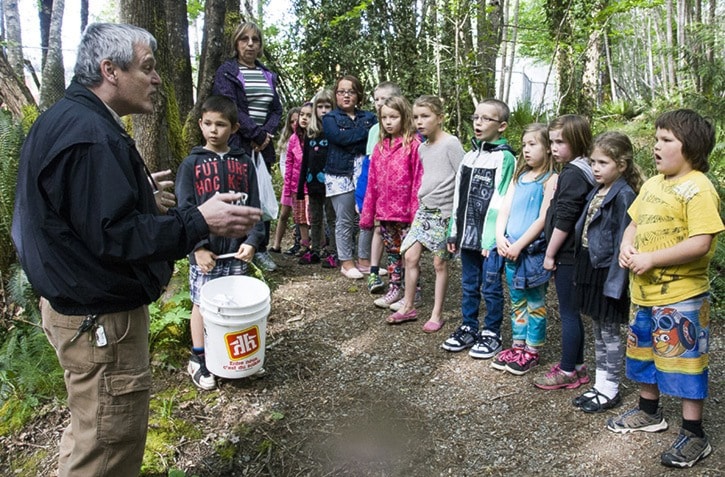Kim Walters’ second grade class is wrapping up their study of salmon and river ecosystems, and recently released close to 100 tiny chum salmon they raised in the classroom from eggs.
On April 29, Walters took her students to Oliver Creek, which runs through the wooded area behind Palsson Elementary School, and — two or three tiny fish at a time — they released all the salmon into the waterway.
“It’s a good use of that beautiful piece of property beside us there. We’re so fortunate to have it. It’s a living science lab,” she said. “They get to see the actual environment where the fish are going.”
Walters said the opportunity for the children to introduce the fish to their natural habitat provides students with a greater appreciation of the local environment.
“They’ve learned the importance of keeping that forested area clean and healthy for the salmon because they’ve gone through this effort to raise them,” she said.
Bob Crandall, president of the Cowichan Lake Salmonid Enhancement Society, runs salmon incubation programs at several Cowichan Valley schools, including Palsson Elementary and Lake Cowichan School.
He said the water level in Oliver Creek is dramatically lower than when he and Walters brought her previous class there last year for the same activity. He said dropping water levels is the greatest risk facing salmon around the lake right now.
“You’ll soon see our people out with aerators and pails and rescuing salmon from pools. You’ll see a side channel that’s been disconnected from the main stream and then it gets smaller every day and the birds start coming and attacking the salmon,” he said. “So we’ll come out with nets and scoop and carry them over to the main [streams].”
Crandall said his group likes to include young people in these rescues, but it’s not possible to bring entire classes because carrying heavy water pails over rocks is too much of a safety hazard for such large groups.
Salmon rescues in lower parts of the Cowichan River have already begun.
Crandall said he and other volunteers will soon be checking all the tributaries around the lake and measuring their water levels.
